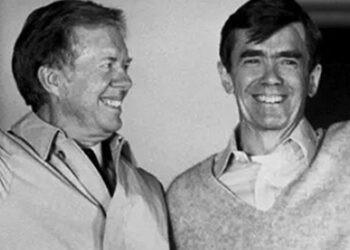Four such scientists have been blown up since 2010.
The program was not just a series of talking heads, but a Hollywood-style production, titled “Terror Club,” complete with pulsating music and re-enactments of the killings.
One man interviewed, Behzad Abdoli, said he was taken to a training camp whose location was bleeped out in the film.
“I had military training there, training in riding motorcycles, shooting, personal defense,” Abdoli said. “They gave us information training as well,… how to take pictures, for example. It took about 40, 45 days.”
The film, which did not say whether the individuals had already faced trial, included pictures of a purported camp outside Tel Aviv.
The United States and United Kingdom have both denied any involvement in the assassinations, while Israel has remained silent.
Human rights organizations including Human Rights Watch and Amnesty International have accused Iran in the past of obtaining bogus confessions from suspects in custody using physical abuse and threats.
“In many instances, torture and other ill-treatment are used to extract ‘confessions’ under duress,” Drewery Dyke, Iran researcher at Amnesty International, told Reuters. “Accusations of torture are routinely ignored in court and not investigated, while ‘confessions’ extracted under duress are accepted as evidence.”
The 14 accused killers shown on TV included eight men and six women.
The TV said closed circuit security cameras in a Tehran street recorded one of the operations, providing clues that led to the suspects.
Another accused assassin, Arash Kheradkish, said he received training in attaching magnetic bombs to moving cars.
“There was a motorcycle racing complex [in Tel Aviv] where we received training. We were told we needed to improve our skills so that we would be able to attach magnetized bombs to moving carsÖ. We were given time bombs where we had to push the start button when we attached it,” he said.
This directly contradicts a recent book published on Israel’s covert operations, which says Israel is behind the assassinations but also says that the Mossad intelligence service sent its own people, Israeli nationals, into Tehran to carry out the actual attacks and did not use Iranians.
The broadcast said Majid Jamali-Fashi and Arash Kheradkish got the highest grades during training in Tel Aviv and were chosen to lead the operations. Jamali-Fashi was arrested in 2010 and confessed a role in the first assassination in January 2010. He was executed in May. Previously, he was shown confessing on videotape.
Maziar Ebrahimi, another suspect, said there were three groups involved in the bombings: Two on a motorbike, a car driving in front to slow the target car and a third support team waiting nearby to help if necessary.
“The assassination control room was in Tel Aviv, but it was receiving the orders from Washington and London,” the TV report said.
On June 28, the Intelligence Ministry announced that everyone involved in the assassinations had been arrested.
Last Tuesday, Intelligence Minister Heydar Moslehi said his agents arrested the accused both inside and outside Iran. The comment that some of the accused were nabbed by Moslehi’s agents abroad was the most startling part of the announcement.
But it recalled a claim some years back that an Iranian diplomat kidnaped in Pakistan had been freed in a dramatic operation carried out abroad by Iranian intelligence agents. It later turned out that the dramatic rescue actually involved no more than paying ransom to the kidnapers.
Moslehi described Iran’s intelligence community as being “at its peak supremacy.”
He said Iran’s intelligence system is not modeled after other intelligence agencies; rather, it has been founded on the basis of the Islamic revolution.















